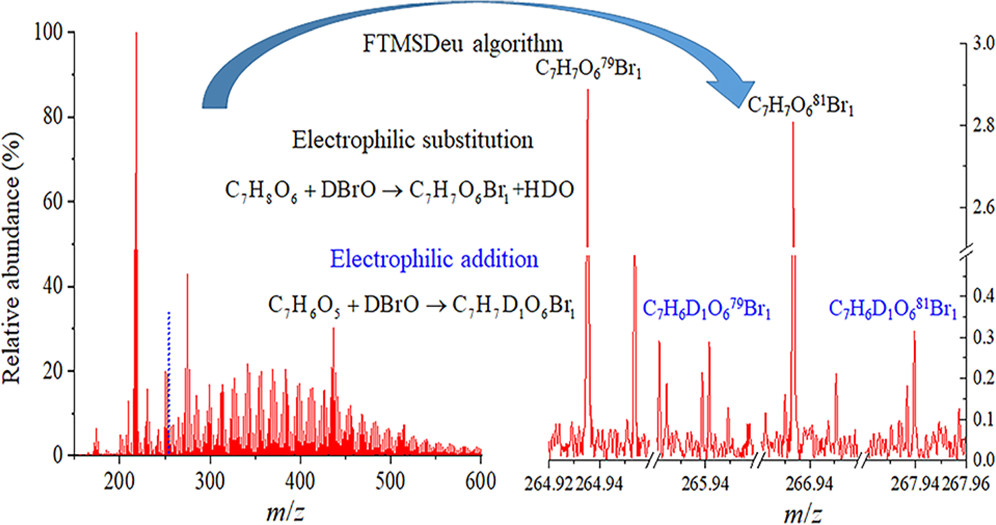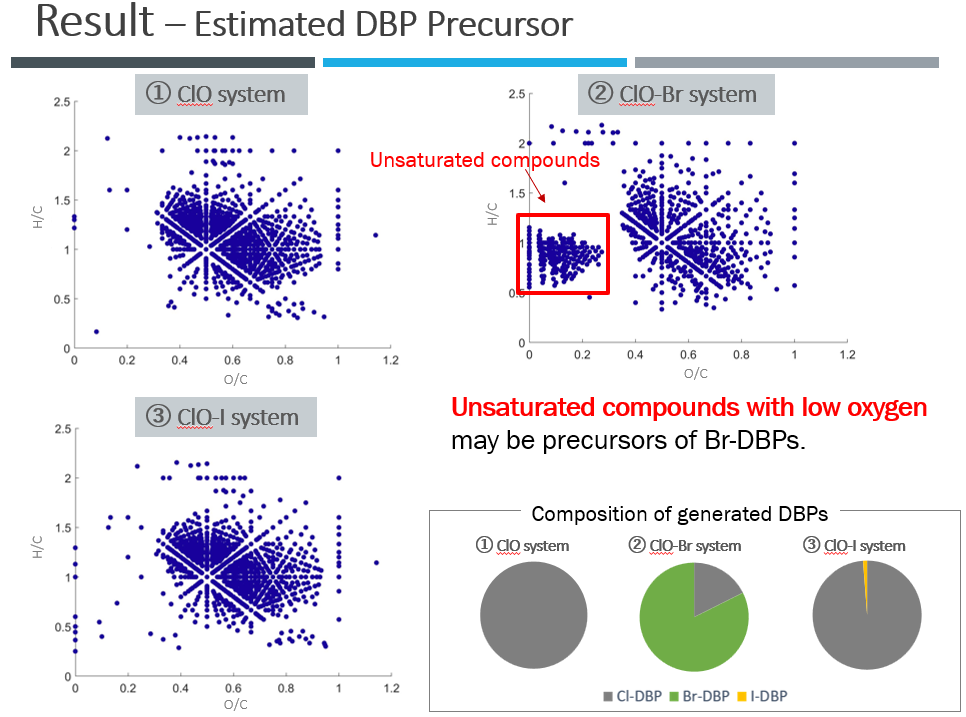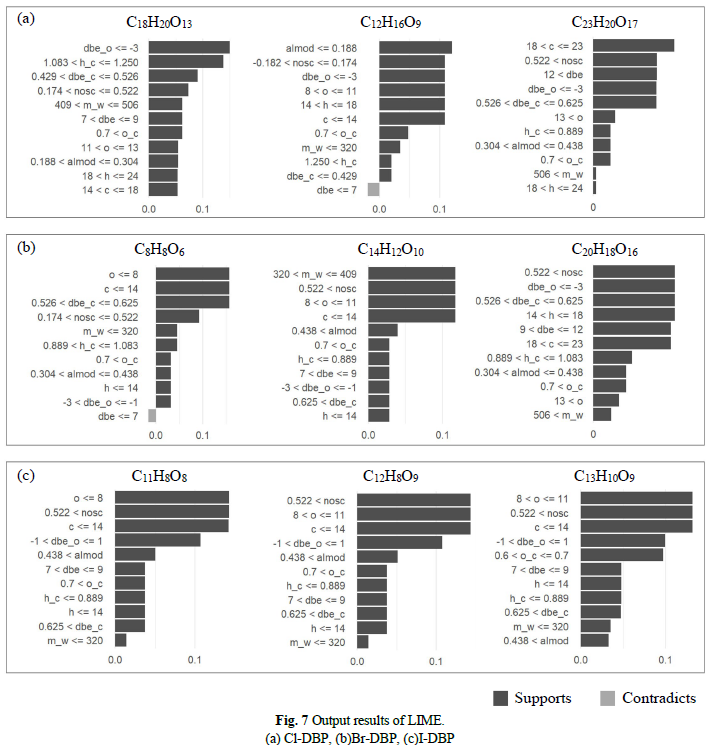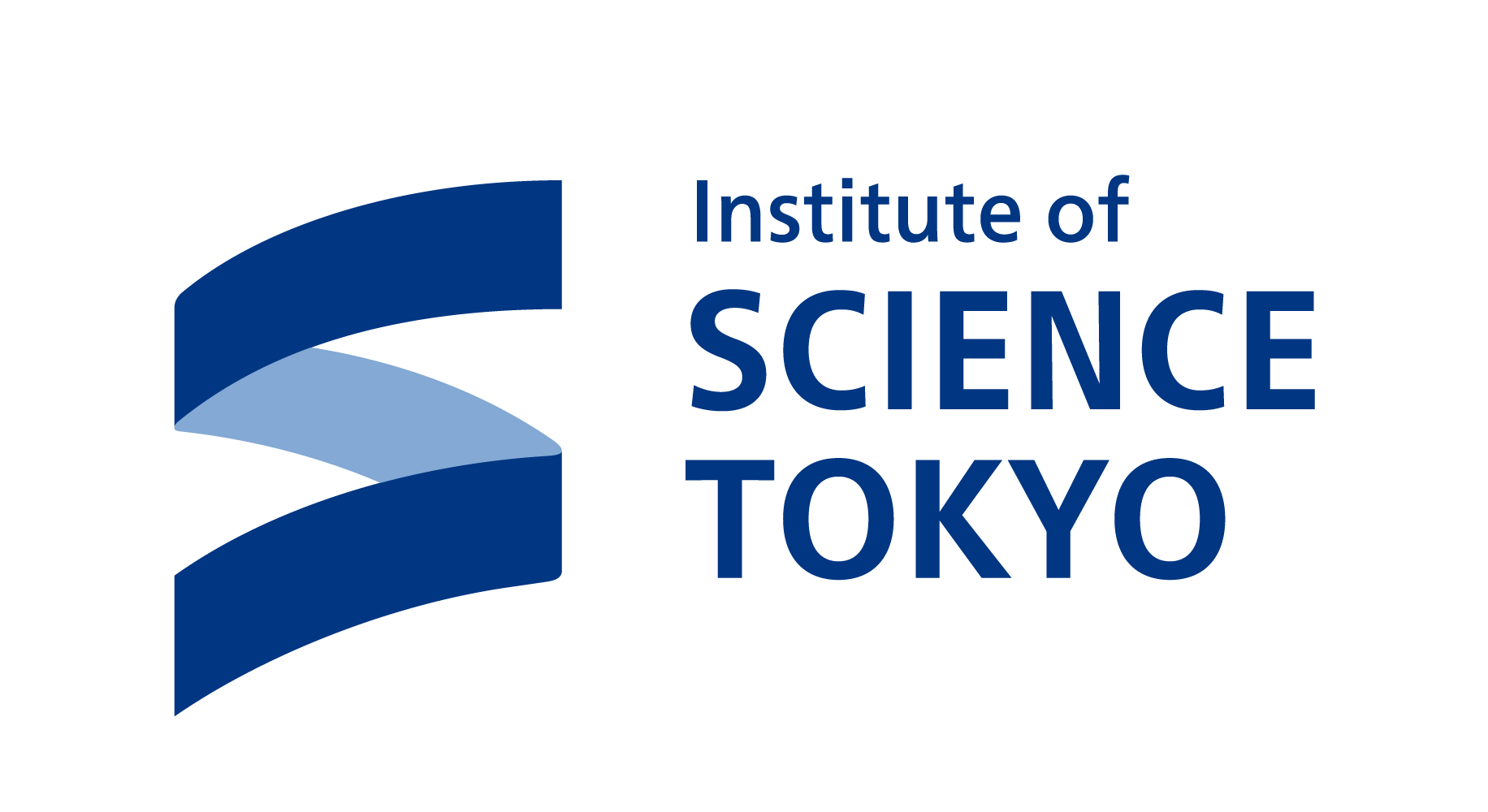
超高分解能質量分析と機械学習を用いた消毒副生成物の形成機構と前駆体NOM分子組成の予測 / Formation mechanism of disinfection by-products and prediction of precursor NOM molecular composition using ultra-high resolution mass spectrometry and machine learning
塩素消毒によって天然有機物(NOM)から消毒副生成物(DBP)が生じうる.本研究では,超高分解能質量分析を用いて重水素標識DBPの分子組成を同定するアルゴリズムを開発し、それを応用することで塩素消毒時のDBPの反応機構を明らかにすることを目的とした.その結果,DBPの多くが共通の分子組成から生じていた.DBP生成における親電子付加反応および置換反応の相対的寄与は,反応に関与するハロゲン種に依存し,次亜ハロゲン酸種の酸性度が反応経路に影響を及ぼす可能性が示された.さらに,NOMの分子特性からDBP生成の有無を予測する機械学習モデルを構築した結果,モデルは高い予測精度を示し,I-DBPの生成において炭素酸化状態等が重要な因子であることが示唆された.
Disinfection by-products (DBPs) can be generated from natural organic matter (NOM) by chlorination. In this study, we developed algorithm to identify the molecular formula of deuterium-labeled DBPs by using ultra-high resolution mass spectrometry in order to clarify the reaction mechanism of DBPs during chlorine disinfection of NOM-containing waters. The results showed that most of the DBPs originated from a common molecular formula, and that the relative contributions of electrophilic addition and substitution reactions to DBP formation depended on the halogen species involved in the reactions, and that the acidity of the hypohalogenic acid species could affect the reaction pathway. Furthermore, a machine learning model was developed to predict the formation of DBP from the molecular characteristics of NOM. The model showed high prediction accuracy, suggesting that the carbon oxidation state and other factors are important in the formation of I-DBP.
超高分解能質量分析法に基づく有機ハロゲン化合物の非標的同定を目的とした高精度分子組成同定アルゴリズムの開発/Development and Application of a High-Precision Algorithm for Nontarget Identification of Organohalogens Based on Ultrahigh-Resolution Mass Spectrometry (figure from Fu et al., 2020)

重水素標識超高分解能質量分析における有機ハロゲン化合物の分子組成同定アルゴリズム: ハロゲン化消毒副生成物の生成メカニズムの解明 / Formula Assignment Algorithm for Deuterium-Labeled Ultrahigh-Resolution Mass Spectrometry: Implications of the Formation Mechanism of Halogenated Disinfection Byproducts (figure from Fu et al., 2022)

消毒副生成物前駆体の性質 / Properties of disinfection byproduct precursors (figure modified from Watanabe et al 2022)

消毒副生成物前駆体(NOM)の性質と機械学習による予測 / Properties of disinfection byproduct precursors (NOM) and its prediction by machine learning (figure modified from Watanabe et al 2022)

関連文献 references
QL Fu, M Fujii, A Watanabe, E Kwon, Formula assignment algorithm for deuterium-labeled ultrahigh-resolution mass spectrometry: implications of the formation mechanism of halogenated disinfection byproducts, Analytical Chemistry 94 (3), 1717-1725, 2022

